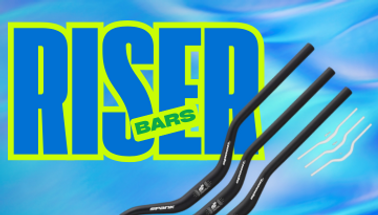Posted by Team Day Zero on 20th Aug 2025
MTB Riser Handlebars: Why You Should Consider Raising Your Bars
You’ve probably seen it, Dakotah's 75mm riser bars! Bikes with sky-high bars rolling out of the lift line, or maybe your mate swearing that higher rise is the secret sauce to handling the steeps. 10, 20, 35, 38, 40, 50... Here’s our take.
Why Riser Bars Matter (And When They Don’t)
More Control & Comfort Going Steep
Riser bars lift your hands and open your upper body, helping you stay centered and relaxed when the trail points straight down. You’ll find it easier to shift weight back, regulate traction, and keep from getting pitched too far over the front.
Flat Bars Still Have Their Place
Climbing efficiency? Flat bars still rule the roost. They give you more weight over the front wheel, which is great on technical uphill grinds. But when it comes to hammering down sustained descents, risers save your wrists, shoulders, and neck from taking a beating.
Day Zero Takeaway
If your bike is seeing more downhill chutes than mellow pedalling flats, riser bars are worth the experiment. They boost confidence, give you better leverage, and help you stay planted when the terrain gets wild. We’ve found a rise of 38 to 40mm is a sweet place to be. We are gravity, baby! And rise is all good.
What they say: Riser Bars
Want to see more about bar rise before you commit? Check out these YouTube breakdowns:
